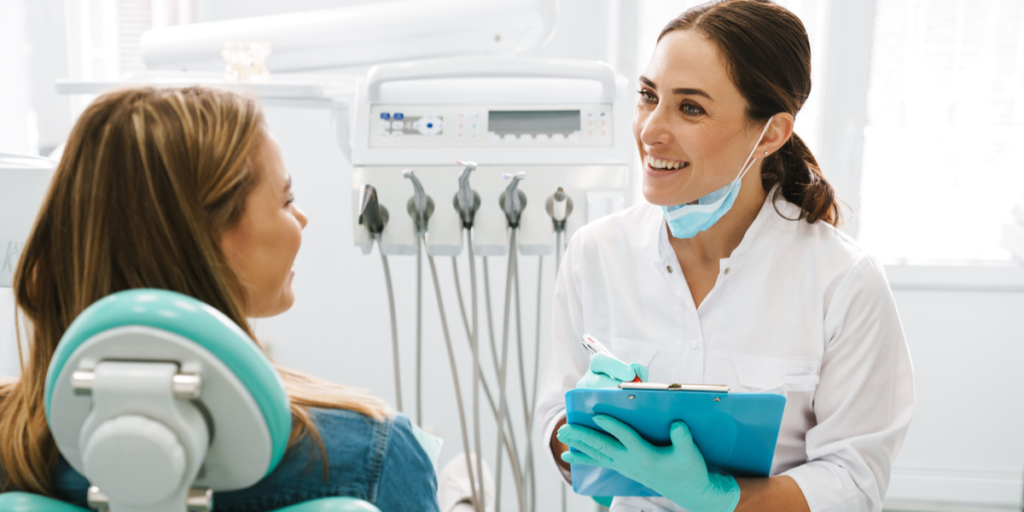Understanding your practice’s value is crucial, especially if you’re considering a future sale or simply want to enhance profitability. One of the most important metrics that is used to determine a dental practice’s value is EBITDA—Earnings Before Interest, Taxes, Depreciation, and Amortization. Focusing on EBITDA allows you to see how profitable your practice is before accounting for financial and tax variables, giving you a clear picture of operational performance. Here, we’ll explore actionable strategies to improve your EBITDA and maximize the overall value of your dental practice.
9 Ways to Improve Your Practice’s EBITDA
1. Optimize Operational Efficiency
Running an efficient practice is essential for EBITDA growth. Take a close look at your current processes, from patient check-in to billing. Are there areas where bottlenecks occur, or where staff spend too much time on administrative tasks? Investing in technology, like dental practice management software, can automate workflows, reduce errors, and streamline processes, which not only saves time but also lowers costs.
2. Manage and Reduce Overhead Costs
One of the quickest ways to improve EBITDA is by reducing overhead. This includes scrutinizing your supply costs, utilities, rent, and lab fees. Consider negotiating with suppliers or exploring bulk purchase discounts. Even small savings can add up significantly over time and positively impact your bottom line.
3. Enhance Patient Retention
Increasing patient loyalty is one of the best ways to grow revenue. Regular appointments, preventive care, and treatment plan follow-ups not only benefit patient health but also contribute to steady revenue. Implementing patient recall systems, improving communication with reminders, and offering flexible scheduling can enhance retention and result in more consistent income.

4. Expand Your Service Offerings
Consider adding new services that can drive higher revenue per patient visit. Adding specialties like cosmetic dentistry, orthodontics, or periodontal treatments can attract new patients and keep existing ones from seeking services elsewhere. Offering a variety of services allows you to increase your average revenue per patient visit, which directly impacts EBITDA.
5. Leverage Technology for Better Diagnosis and Treatment
Modern technology, like digital X-rays, CAD/CAM systems, and 3D imaging, can improve both diagnostic accuracy and treatment planning, resulting in better patient outcomes and practice efficiency. Investing in advanced technology can also help differentiate your practice and justify premium fees, boosting revenue without significantly increasing labor costs.
6. Implement a Strategic Marketing Plan
An effective marketing strategy brings in a steady flow of new patients. Build an online presence through a website, social media, and patient reviews to attract people searching for a local dentist. Optimizing for local search terms and partnering with a marketing agency that understands the dental industry can significantly increase patient inquiries. More patients translate into higher revenue, positively impacting EBITDA.
7. Focus on Staff Training and Retention
A well-trained and motivated team is crucial to a smooth-running practice. Invest in ongoing staff training for better patient care, communication, and practice management. Retaining skilled staff reduces hiring costs and minimizes disruption to daily operations. Plus, patients appreciate seeing familiar faces at each visit, which can foster trust and loyalty.
8. Monitor and Improve Billing and Collection Processes
Improving your billing practices and reducing collection times can have a big impact on cash flow and EBITDA. Audit your billing process to ensure that it’s timely and accurate, and consider offering flexible payment plans to encourage timely payments. Efficient billing and collection mean more revenue reaches your bottom line, improving your EBITDA and overall practice value.
9. Regularly Analyze and Adjust
Finally, make it a habit to review and analyze your practice’s financials regularly. Track your EBITDA over time to spot trends, identify potential problems, and seize opportunities for growth. Small adjustments over time can have a compounding effect, gradually increasing your practice’s value and making it more attractive to potential buyers.
Why Increasing EBITDA Matters for Your Practice Value
The more profitable your practice is, the more appealing it becomes to buyers, lenders, and investors. A higher EBITDA means your practice generates substantial profit from its core operations, making it more resilient and valuable. Whether you’re thinking of selling your dental practice or simply aiming to build robust finances and routines, focusing on EBITDA offers a reliable pathway to success.
Ready for more in-depth insights into improving your practice? Schedule a free consultation with a NextLevel coach today to find out how we can help you not only strengthen your bottom line but also bring greater peace of mind as you build a practice that is financially healthy and ready for growth.






